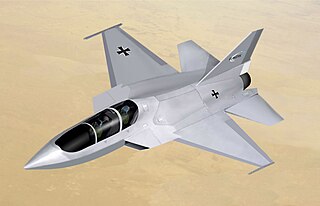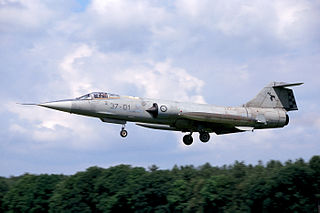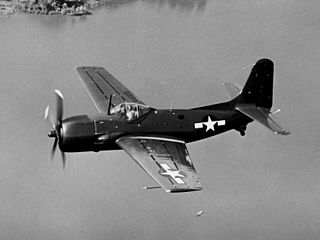
The Aermacchi or Macchi MB-326 is a light military jet trainer designed in Italy. Originally conceived as a two-seat trainer, there have also been single and two-seat light attack versions produced. It is one of the most commercially successful aircraft of its type, being bought by more than 10 countries and produced under licence in Australia, Brazil and South Africa. It set many category records, including an altitude record of 56,807 ft on 18 March 1966. More than 800 MB-326s were constructed between 1961–1975.
Aeritalia was an aerospace engineering corporation based in Italy. It was formed out of the merger of two aviation companies, Fiat Aviazione and Aerfer, in 1969.

The AMX International AMX is a ground-attack aircraft jointly developed by Brazil and Italy. The AMX is designated A-11 Ghibli by the Italian Air Force and A-1 by the Brazilian Air Force. The Italian name, "Ghibli", is taken from the hot dry wind of the Libyan desert.

The EADS Mako/High Energy Advanced Trainer (Mako/HEAT) was a high-performance jet trainer or light attack aircraft intended for service with several European air forces. EADS proposed the Mako for the Eurotrainer program. The program was the final result of the AT-2000 project.

The Scottish Aviation Bulldog is a British two-seat side-by-side training aircraft designed by Beagle Aircraft as the B.125 Bulldog.

The SIAI-Marchetti S.211 is a turbofan-powered military trainer aircraft designed and originally marketed by Italian aviation manufacturer SIAI-Marchetti.

The Aerfer Sagittario 2 was a prototype all-metal single-seat lightweight fighter aircraft built in Italy by Aerfer, intended to serve as an interceptor or light tactical support aircraft. First flown in 1956, it became the first Italian aircraft to break the sound barrier in controlled flight when it reached Mach 1.1 during a dive from 13,725 m (45,000 ft).

The BAC 167 Strikemaster is a British jet-powered training and light attack aircraft. It was a development of the Hunting Jet Provost trainer, itself a jet engined version of the Percival Provost, which originally flew in 1950 with a radial piston engine.

The Mitsubishi F-1 is a Japanese swept-wing, single-seat, twin-engine supersonic strike aircraft that was in service with the Japan Air Self-Defense Force (JASDF) from 1978 to 2006. It was Japan's first domestically designed and built supersonic combat aircraft, jointly developed by Mitsubishi Heavy Industries. It is essentially a T-2 trainer airframe modified for a dedicated anti-ship and ground attack role.

The Soko G-4 Super Galeb, also referred to as N-62, is a Yugoslav single-engine, advanced jet trainer and light ground-attack aircraft designed by the Aeronautical Technical Institute at Žarkovo and manufactured by the SOKO aircraft factory in Mostar.

The Martin Model 167 Maryland was an American medium bomber that first flew in 1939. It saw action in World War II with France and the United Kingdom.

The AIDC AT-3 Tzu Chung is an advanced jet trainer operated by the Republic of China Air Force (ROCAF). A total of sixty-two aircraft were manufactured by the Aerospace Industrial Development Corporation of Taiwan in collaboration with American aircraft manufacturer Northrop between 1984 and 1990. Two A-3 single-seat attack version were also built.

The HAL Ajeet was a jet-powered fighter aircraft developed and manufactured by Indian aerospace manufacturer Hindustan Aeronautics Limited (HAL). It was operated by the Indian Air Force (IAF) between 1977 and 1991.

The Sukhoi Su-30MKM is a supermaneuverable fighter of the Royal Malaysian Air Force. It is a variant of the Su-30 series fighters, with many significant improvements over the original Su-30MK export version. The Su-30MKM was developed by the Sukhoi Design Bureau and is based on the Su-30MKI of the Indian Air Force. Both aircraft have common airframe, thrust vectoring engines and digital fly-by-wire system, however the MKM version differs from the MKI mainly in the composition of the onboard avionics. It can carry up to 8,000 kg (17,637 lb) payload over a 1,296 km un-refueled combat radius.

The Soko J-20 Kraguj (Sparrowhawk) is a light military, single-engine, low-wing single-seat aircraft with a metal airframe, capable of performing close air support, counterinsurgency (COIN), and reconnaissance missions, that was designed by VTI and manufactured by SOKO of Yugoslavia, first flown in 1962.
Valmet L-80 TP Turbo-Vinha was a prototype for a new Finnish turboprop basic trainer aircraft. The aircraft, which carried the designation OH-VBB, first flew on 12 February 1985. It was destroyed in a crash on 24 April 1985, during its 14th flight, killing the test pilot Paavo Janhunen. The aircraft was a further development of the Valmet L-70 Vinka and would eventually lead to the Valmet L-90 Redigo.

The Piaggio P.166 is an Italian twin-engine pusher-type utility aircraft developed by Piaggio Aero. The aircraft model name was Portofino, and is also known as Albatross in South African military service.

The Aeritalia F-104S Starfighter was a licensed production Italian version of the Lockheed F-104 Starfighter, which served in the Italian Air Force, and was its mainstay from the late 1960s until the beginning of the 21st century. The F-104S also served in the Turkish Air Force until the mid-1990s. The F-104S was the final development of the Starfighter line.

The Curtiss XBT2C was a prototype two-seat, single-engined dive/torpedo bomber developed during World War II for the United States Navy. Derived from the Curtiss SB2C Helldiver dive bomber, it was an unsuccessful competitor to meet a 1945 Navy specification for an aircraft to combine the roles that previously required separate types. Unlike the other competitors, the XBT2C was designed to accommodate a radar operator.

The Fairchild AU-23 Peacemaker is an American armed gunship, counter-insurgency, utility transport version of the Pilatus PC-6 Porter for the United States Air Force. A total of 35 were built under license in the United States by Fairchild Industries, for use during the Vietnam War in the early 1970s. All aircraft were later sold to the Royal Thai Air Force.




















